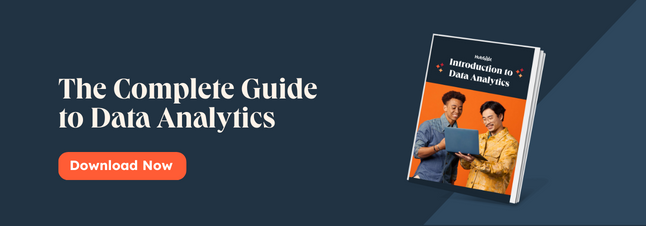What is data cleaning?
Data cleaning — also known as data cleansing or data scrubbing — is the process of modifying or removing data that’s inaccurate, duplicate, incomplete, incorrectly formatted, or corrupted within a dataset.
While deleting data is part of the process, the ultimate goal of data cleaning is to make a dataset as accurate as possible. This might require fixing spelling and syntax errors, identifying and deleting duplicate data points, correcting mistakes like mislabelled or empty fields, and standardizing how data is entered or combined from multiple sources.
Before we explain why this step is important in the overall data preparation process, check out this video by SkillCurb for another quick definition of cleaning data:
Why is data cleaning important?
Cleaning data is important because it will ensure you have data of the highest quality. This will not only prevent errors — it will prevent customer and employee frustration, increase productivity, and improve data analysis and decision-making.
This makes sense. Without cleaning data first, the dataset is more likely to be inaccurate, unorganized, and incomplete. Any data analysis will therefore be more difficult, less clear, and less accurate — and so will the decisions based on that data analysis.
Now that we understand what data scrubbing is and why it’s important, let’s look at some data cleaning steps and techniques below.
If you’re more of a visual learner, check out this video on why and how to clean your data:
1. Remove duplicate contacts.
Duplicates are usually caused by two things: inconsistent data entry and multiple channels that capture contact information. There are tools to help you remove duplicate data. For instance, if you work with Google Contacts, you can merge your contacts and detect duplicates for free.
If you’ve never done a de-duplication, you might have to manually scan and edit your contacts. This step will take some time, but if you implement company-wide data entry standards and make a commitment to quality data, you will only have to do this once.
Here are some tips that can help with de-duplication:
- Use a de-duplicator such as Dedupley.
- Use data validation tools that help you to determine the validity of your data, such as email verification tools. Experian Data Quality has some powerful validation programs that allow you to check emails, addresses, and telephone numbers in bulk.
- To avoid having duplicate contacts across different applications, keep your core tools in sync to eliminate the need for entering the same data into different tools.
2. Correct structural errors.
Structural errors refer to typos, unusual naming conventions, inconsistent abbreviation, capitalization, or punctuation, and other errors that usually result from manual data entry and lack of standardization. For example, “Not Applicable” and “N/A” may appear as separate categories, but should be analyzed as the same.
3. Address missing data.
Missing data is inevitable. There are a few ways you can tackle this problem:
- Remove the entries that have missing values.
- Input missing values based on other information in the dataset.
- Flag the data as missing.
None of these solutions are perfect, but they will help to minimize the negative impact on your data analysis.
4. Keep your data fresh.
All databases degrade — in fact, according to a study by Vainu, 30 percent of company data becomes outdated each year. This is due to many factors, including people changing email addresses, getting new phone numbers, leaving organizations, and changing job titles.
It’s best to keep your data fresh by implementing a few tactics. You can do this by using parsing tools, which scan all incoming emails and update contact information as it comes to hand.
So, if a contact gets a job with a different company, for example, your central database will be instantly updated. It’s also a good idea to delete all email addresses that have bounced or opted out — this kind of information can most likely be found in your email marketing tool. Not only is this good practice for keeping your data fresh, but it also helps keep you out of spam folders.
5. Standardize data entry.
All the measures above will be fruitless if you don’t implement company-wide data entry standards. You should create rules dictating whether values should be all lowercase or all uppercase, what unit of measurements numerical data use, and which fields are required when creating a contact record, for example. You should also ensure employees know how to check for duplicates before creating a new contact, and what the correct apps are for entering data. This will save you time when checking for duplicate, incorrect, or outdated data in the previous steps.
By following these simple tactics, you can make sure you have a much cleaner and more organized contacts database. Don’t forget to bidirectionally sync the data between your key business applications: it minimizes manual data entry and ensures you’re always looking at the most up-to-date, accurate contact information in all your tools.
Data Cleaning Tools
As seen from above, data cleaning requires many steps. Some of these tasks have to be performed manually; others can be automated with a tool. Let’s check out some popular data cleaning tools and what they’re best for below.
1. Operations Hub
 Best for: Companies that want to use one central CRM platform as their source of truth
Best for: Companies that want to use one central CRM platform as their source of truth
Operations Hub lets users sync, clean, and curate customer data, and automate business processes from one central CRM platform. With this software, you can automatically fix date properties, format names, and more to reduce time-consuming data cleanup.
2. WinPure Clean & Match

Best for: Companies in need of an all-in-one solution for data quality
WinPure Clean & Match is a data cleansing and matching software suite designed to increase the accuracy of business or consumer data. This software suite is ideal for cleaning, completing, correcting, standardizing, and deduplicating different types of datasets, including mailing lists, databases, spreadsheets and CRMs.
3. OpenRefine

Best for: Companies on a budget
OpenRefine — formerly known as Google Refine — is a free, open source tool for cleaning, transforming, and extending data. This tool enables users to import large datasets and scrub them much faster and easier than they could manually.
4. Trifacta

Best for: Teams of data analysts and non-technical users
Trifacta is designed to be easy to use for data analysts and non-technical users alike. It has a visual, user-friendly interface and provides users with intelligent suggestions powered by machine learning throughout its unique six-step data cleaning process.
5. DemandTools

Best for: Companies focused on lead generation
With 13 modules that help apply record changes in bulk, standardize data, and detect, eliminate, and prevent duplicate records, DemandTools is a versatile and adaptable data cleansing solution for CRMs. With this tool, business can clean and maintain CRM records faster, which will help boost the productivity of their sales and marketing teams.
6. RingLead Prevent

Best for: Companies looking for an end-to-end data management solution
RingLead Prevent is known as a “data orchestration platform,” meaning it combines data from multiple sources and not only cleanses it, but enriches, deduplicates, segments, normalizes, scores, and routes it to trigger automated workflows, initiate engagement campaigns, and more. This ensures your CRM and MAP is protected from untrustworthy, or dirty, data at all points of entry.
Start data scrubbing today
Cleaning data is an essential part of the data analytics process. You want to analyze data that’s accurate, correctly formatted, complete, and unique so you can use those insights to make decisions at your company. Data cleaning can be a long process, but there are tools to help. What’s stopping you from getting started?
Editor's note: This post was originally published in October 2021 and has been updated for comprehensiveness.











